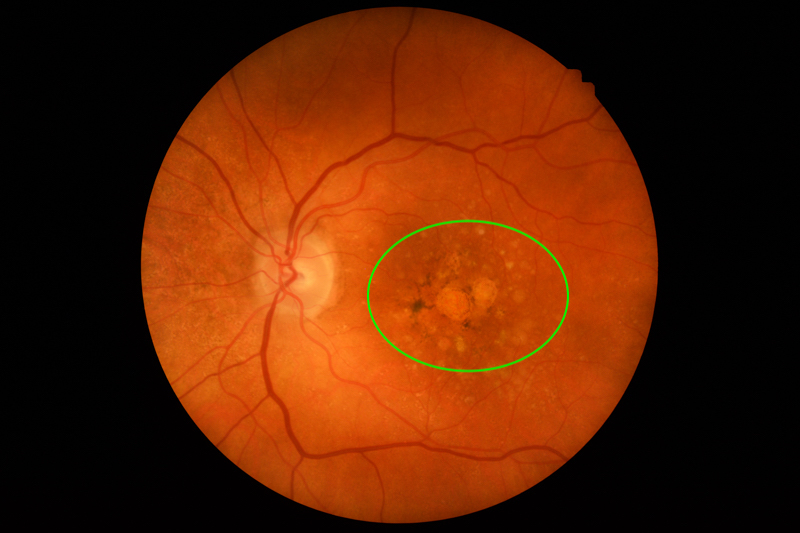Age-related macular degeneration (AMD) occurs as the central retina starts to break down due to disruptions in antioxidant capability and immune signalling pathways, namely one called the complement cascade. This is more likely as we age, and leads to gradual atrophy (decay) of the retinal pigment epithelium (RPE) and photoreceptor cells it supports in dry AMD, called geographic atrophy in late stages. In the wet form of AMD, new abnormal blood vessels start to form (neovascularisation) in response to damage signals from our retinal cells, and some of these can leak fluid into subretinal spaces. This leads to loss of central and some colour vision.
It is important to intervene early in the least invasive way, at pre-intermediate dry AMD stages. This may include dietary supplements, nutrition and exercise counselling, and general management of risks to prevent disease progression to late stage atrophy or wet forms of AMD. The latter may require monthly intravitreal (into the eye’s vitreous chamber) injections to stop neovascularisation.
At the moment, Wet AMD is the leading cause of irreversible sight loss in elderly populations.
References & Resources
- Bonavitacola, J. (2025, February 7). 5 Things to Know During AMD Awareness Month. AJMC.
- Lim, R. (2025, June 2). Singapore Leads South-East Asia in Groundbreaking Eye Implant Trial for Blindness Prevention. Broadsheet Asia.
- (2025, September 25). New Data for Genentech’s Vabysmo Reinforce Its Efficacy, Safety and Durability in Wet Age-Related Macular Degeneration (AMD). Business Wire.





